Julien Dossena of Paco Rabanne talks friendship, sci-fi and chain mail dresses
Jan 21, 2021
As creative director of Paco Rabanne since 2013, Julien Dossena has breathed new life into a once radical and avant-garde brand. He talks to #legend about friendship, science fiction and turning chain mail into works of art
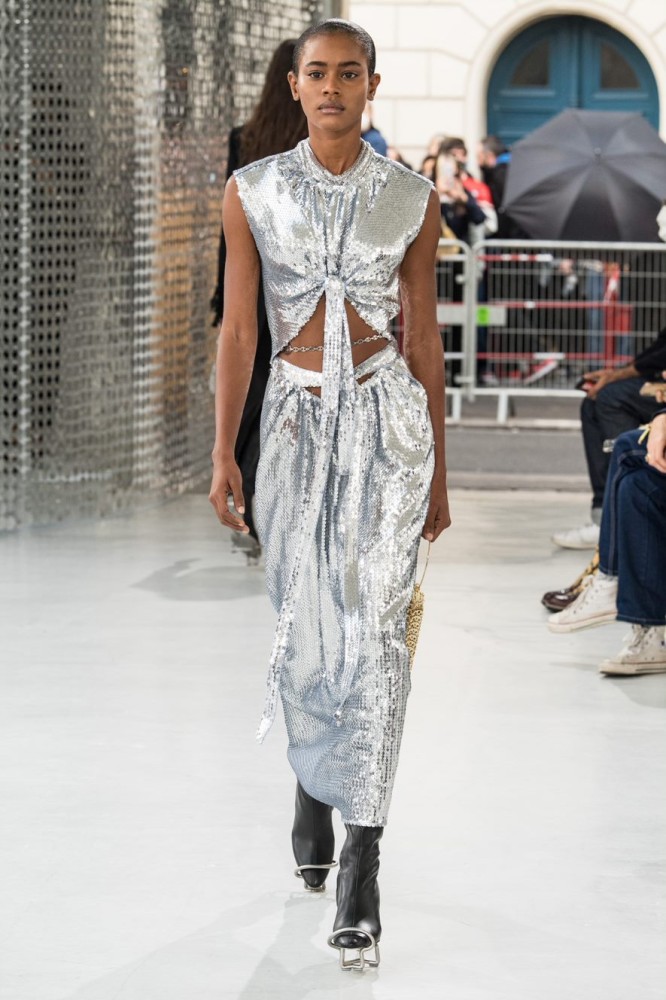
Photo: Paco Rabanne 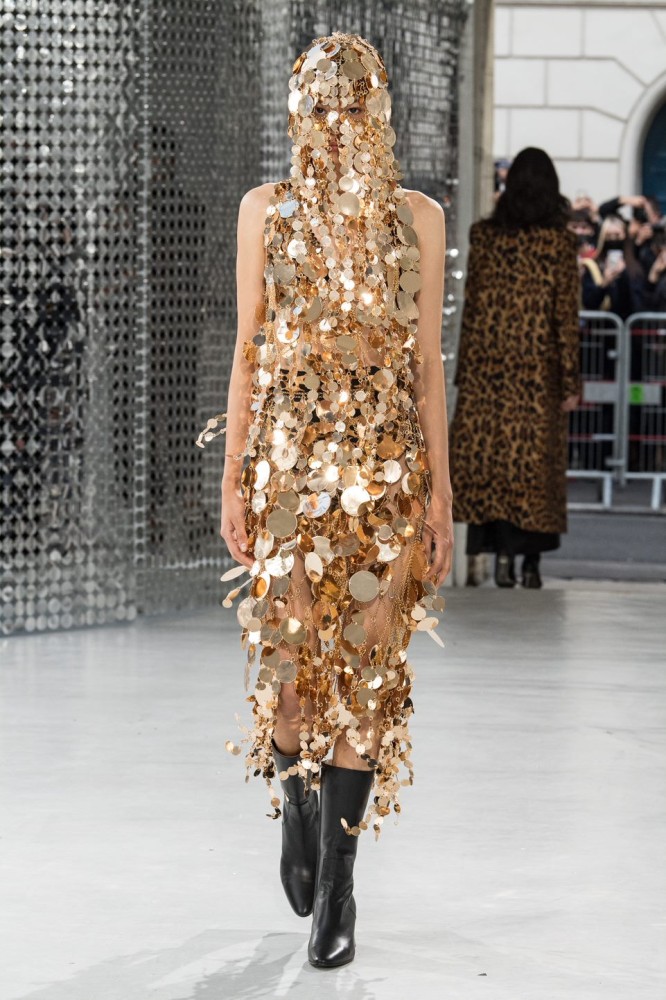
Photo: Paco Rabanne
If the carousel that is the fashion industry of late is anything to go by, the chemistry between creative director and brand is a notoriously tricky formula to get right. When it comes to respecting and reinterpreting the hallmarks of a heritage maison while also allowing a designer’s signature talents to shine, chances for success are often slim – which makes Julien Dossena’s tenure at Paco Rabanne such a welcome surprise.
Since his appointment as creative director of the women’s ready-to-wear line in 2013, Dossena has become known for silk slip dresses with romantic floral prints, jeans that capture the insouciance of the Paris cool girl, laser-sharp suits cut just so and a much hyped athleisure offering – not to mention dresses, tops, jackets and bags made of metal pieces as small as sequins and as large as one’s palm in signature Paco Rabanne style.
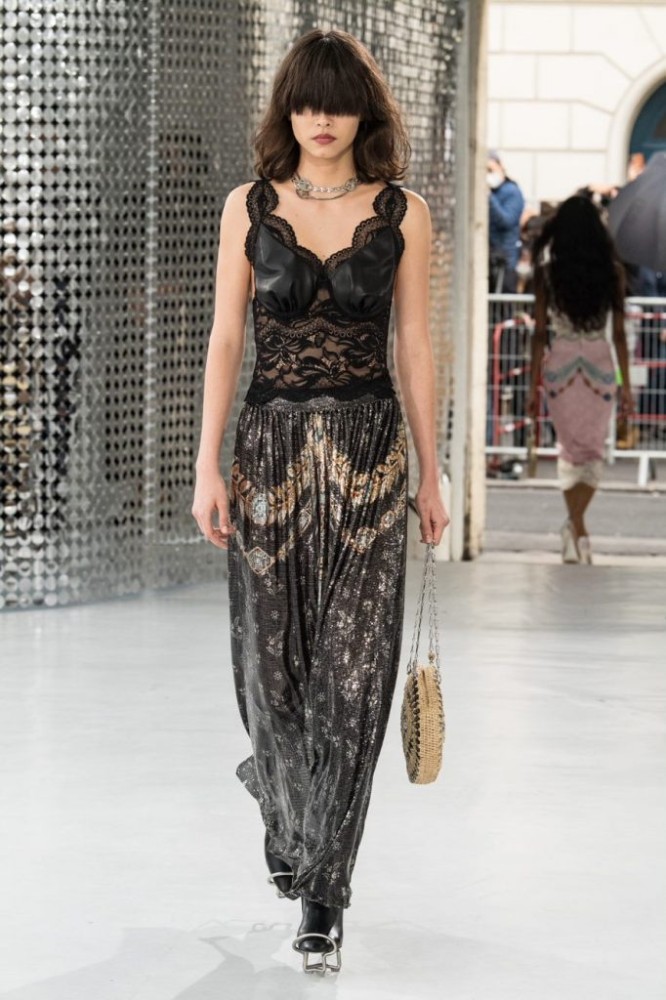
“It’s such a strong brand with really unique aesthetic values,” Dossena says of the radicalism and instinctiveness with which the brand’s founder crafted his avant-garde pieces. “It resonates perfectly with the present times and the fact that you have to express your values strongly. When I think of Paco Rabanne, I don’t think retro; I think revolution, rebellion and renaissance.”
According to Libby Page, senior market editor at Net-a-Porter, which houses an exclusive Paco Rabanne capsule collection, “Julien Dossena has brilliantly reimagined Paco Rabanne’s spirit with new relevance for the modern woman. His designs are diverse and wearable whilst also remaining innovative.”
Paco Rabanne’s history
Innovation and experimentation were certainly hallmarks of Paco Rabanne. The Spanish couturier was born Francisco Rabaneda y Cuervo in Spanish Basque country and during the Spanish Civil War fled to France with his mother, a head seamstress at Balenciaga. After training as an architect, he applied his skills to accessory design before establishing his eponymous fashion house in 1966.
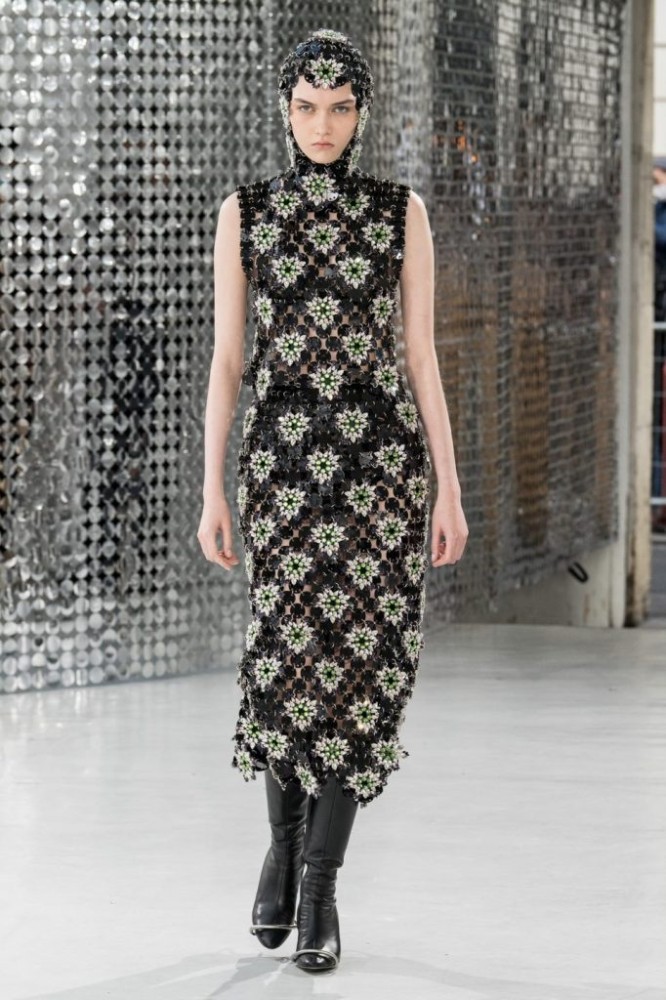
Rabanne soon became renowned for working with unusual materials like moulded plastics, hammered metal, aluminium jersey and Rhodoid discs, and for putting his signature chain mail pieces together with pliers rather than needle and thread. Jane Birkin, Brigitte Bardot, Françoise Hardy, Audrey Hepburn and, perhaps most famously, Jane Fonda – specifically in Barbarella, whose costumes he designed – were just a few of the celebrities Rabanne dressed until he retired from fashion in the 1990s and began prophesying the apocalypse (earning him the nickname “Wacko Paco”).
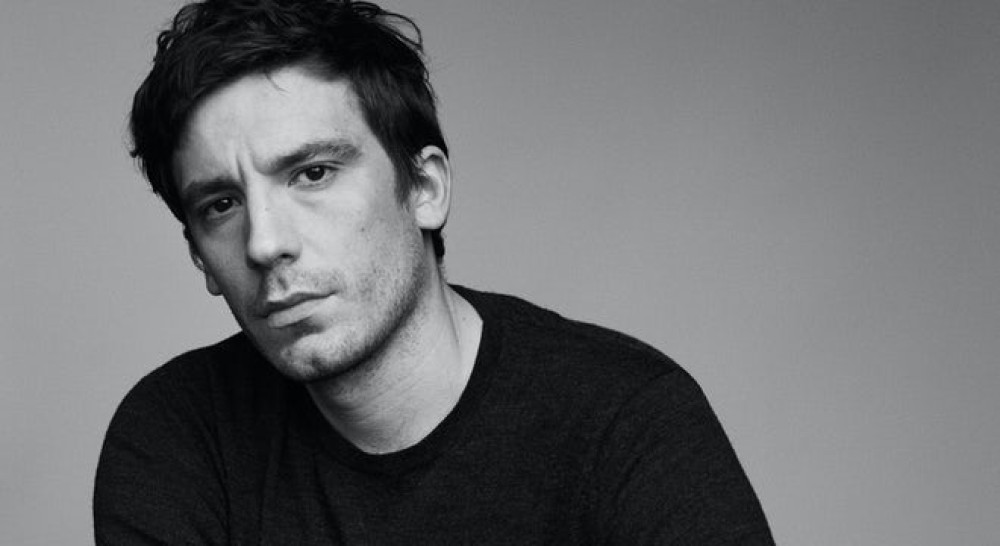
“I wanted to kind of create moving art installations, as if sculptures were suddenly alive.”
Julien Dossena
Unsurprisingly, the brand slid into obscurity – relegated to airport perfume shelves with its fragrances Black XS and 1 Million – and made multiple attempts at resuscitation without much success. Everything, however, changed upon Dossena’s arrival.
The arrival of Julien Dossena
Recommended by friend and stylist Marie-Amélie Sauve, Dossena had been designing for the brand as a freelancer after leaving Balenciaga, where he was a senior designer under Nicolas Ghesquière. Despite coming in as a relative unknown, Dossena has displayed confidence and an ability to give the house new relevance while retaining its radical futurism (without any of the original Jetsons-style kitsch).
“I had in my mind what I thought the brand should be, but it has been a constant evolution from day one,” he says. “The thing is, while you may have plans they never go exactly the way you think they should. You have to recognise the feelings you have in that moment and go for it. That’s fashion.”
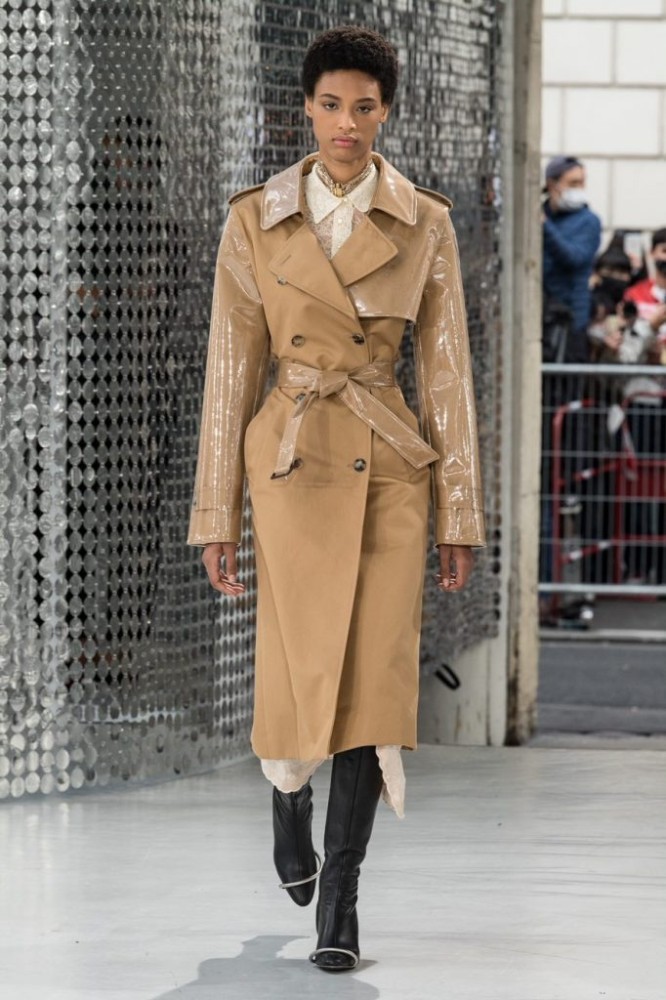
A closer look at Dossena’s own proclivities, even in childhood, suggests that he is uniquely suited to the Paco Rabanne ethos. For example, he has a professed interest in science fiction. “As a child, I was amazed by those writers who could create an entire world with its own rules,” he says. “It felt so dreamy to be able to imagine these parallel universes or utopias.”
Like Rabanne, Dossena entered the fashion industry with an artistic perspective. After studying art history at École Supérieure, he earned a master’s in fashion design at La Cambre in Brussels. “It was drawing [that drew me to fashion when I was young],” he says. “I was always drawing and, pragmatically, I thought it was necessary to find a job where I can draw every day. I loved Belgian fashion and Brussels, and La Cambre seemed the best way to experience it. I met all my best mates there, so I learned friendship as a strong value in my life. And I learned hard work.”
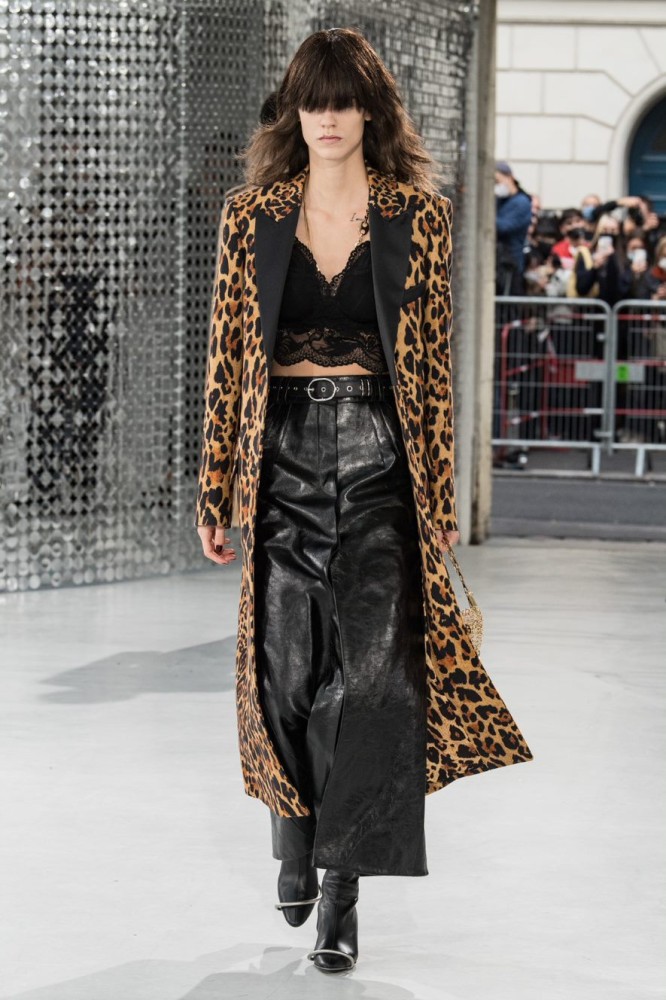
Photo: Paco Rabanne 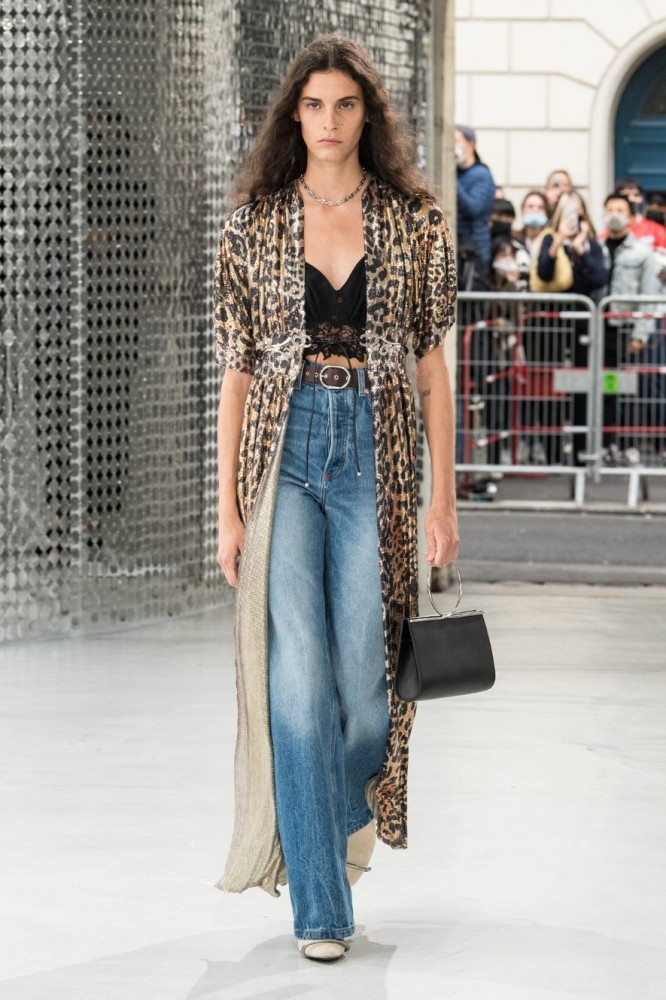
Photo: Paco Rabanne
Indeed, in stark contrast to the claws-out atmosphere for which the fashion industry is known, Dossena maintains close friendships with a core group of designers – many of whom he worked with at Balenciaga. “It gives me strength and tenderness in an industry that’s tough and competitive,” he says. “It’s important to have people around who help you to compare experiences and bring balance to it all.”
Dossena’s approach to design
Dossena attributes much of his current design ethos to his time under Ghèsquiere, the former creative director of Balenciaga who’s now heading up Louis Vuitton. “It shaped my approach to design in the way that it gave me a strong fashion and image culture,” Dossena says. “A way to take references and mix them to create new references. The seriousness of it and the value of never letting go of curiosity and to experiment. That kind of laboratory approach speaks quite well to the Paco Rabanne brand, I feel.”
A key reference in the case of Paco Rabanne is chain mail. Dossena’s runway shows have featured glimmering looks from the spring/summer 2021 collection dresses that follow the curve of the body but the looks that truly take the audience’s breath away are the gowns replete with metal headpieces, a modern rendition of suits of armour befitting Joan of Arc.
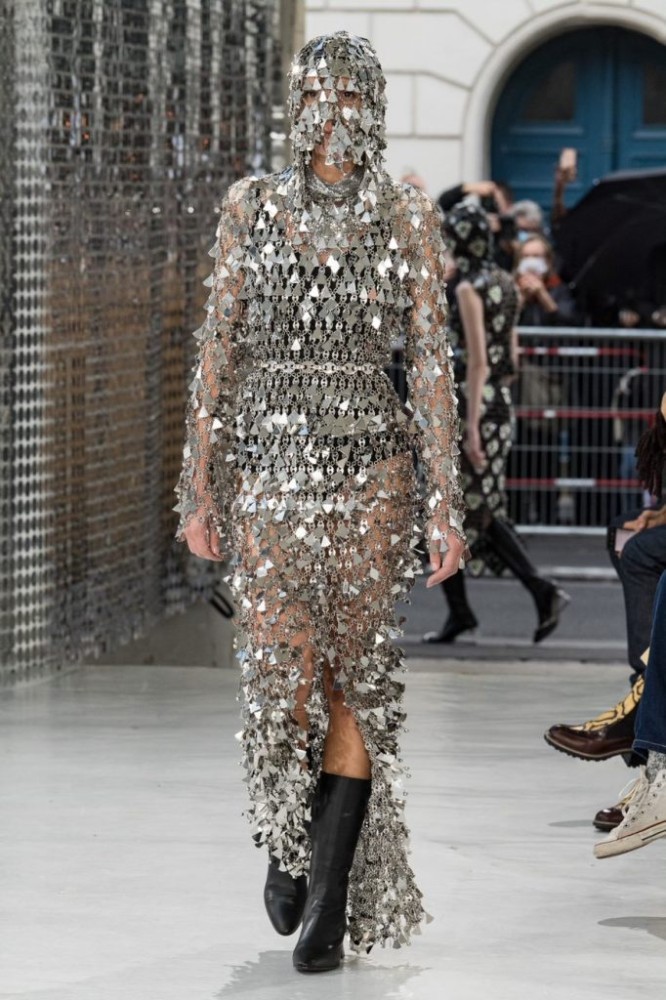
“Craftsmanship and handwork is a central tenet at Paco Rabanne – the touch, feel and sensuality of it,” Dossena says. “It’s core to my work as well and I love to create new textures and chain mail. It may be what is closest to art in my work and in Paco Rabanne’s world.”
But even Dossena is in awe of the material. “It was really nuts to do,” he says. “I wanted to kind of create moving art installations, as if sculptures were suddenly alive. And the sound as well, as if they were making their own music.”
Comfort in design
While Rabanne treated his models as living sculptures, expecting them to don stiff pieces of metalwork, Dossena has approached his reworking of metal to create comfortable pieces that move with the wearer. “That’s the balance of it,” Dossena explains. “The body is the soul of the clothes and the material. It needs to be exalted and underlined. That’s the balance to achieve. Moreover, you are dressing real people. Their attitude and personality have to shine through in their moves and postures. It’s always important to remember this.”
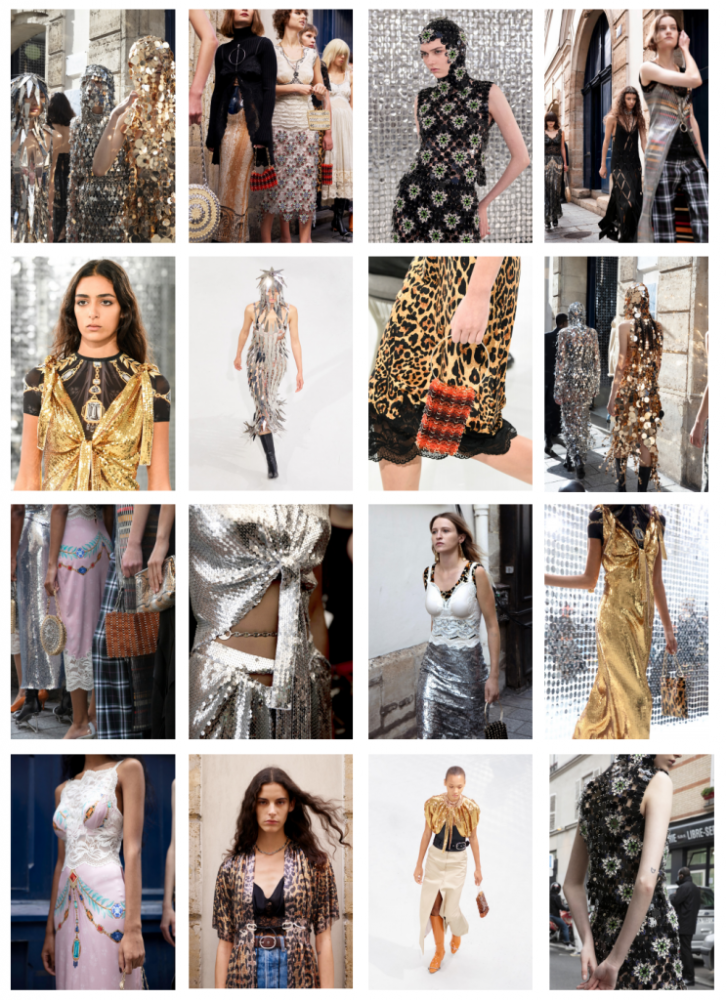
Dossena’s spring/summer 2021 collection certainly speaks to this holistic approach. Though the designer spent lockdown gardening in the countryside with friends – “I felt more numb than creative” – the collection became his interpretation of the people he missed observing on the streets. During the show, he even opened the doors to reveal the people and cars passing by outside.
“It was tough but super pleasant to imagine the future in this sad moment. We made the show small and precious, never compromising and confident about our proposition,” he says, wistfully. “Paco Rabanne has always been grounded in forward evolution and modernity. It’s a brand that empowers women with an uncompromising femininity – one that moves with the times to address both the pragmatic and aesthetic values of today.”
see also: Net-a-Porter global buying director Elizabeth Von der Goltz’s fashion forecast for 2021




























